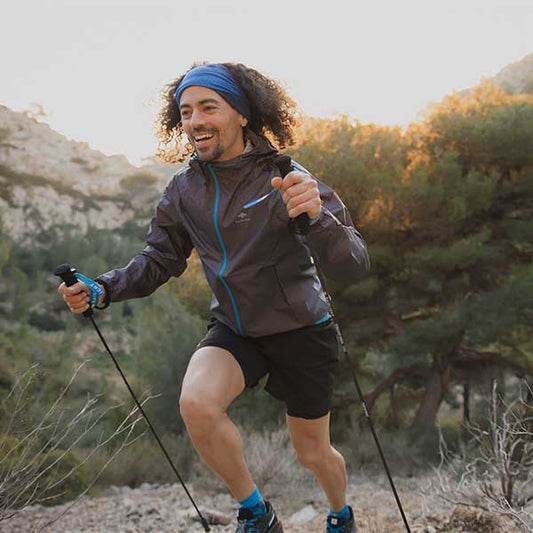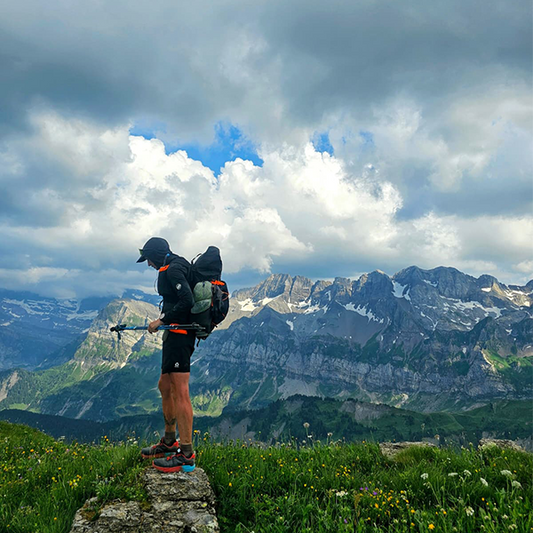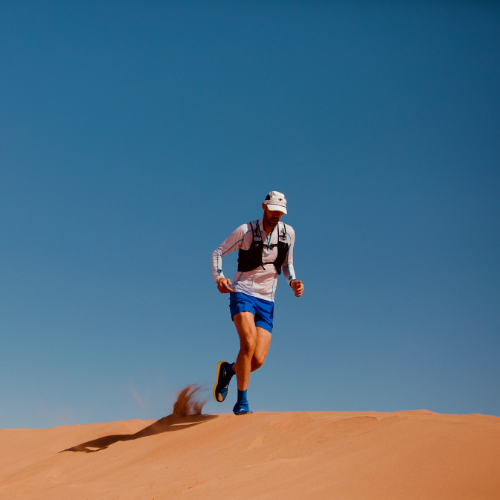Trail running requires specific equipment, to be adapted according to the season, the weather and the distance covered. Choosing the right equipment can be decisive, which is why certain elements are essential.
Starting trail running is all very well, but having the right equipment is even better.
When you set out to do a trail run, whether you have a race number or not, there are some things you can't improvise. If trail running is a taste of adventure, you shouldn't set off with no equipment, or poorly equipped equipment (which is almost worse). So, to make sure your adventure doesn't turn into a bad experience, here are the basics to remember.
The trail running bag
If there's one item of trail equipment that needs your attention after your shoes, it's your trail running bag.
If you're going to be on your own, you need to be prepared for every eventuality. In this discipline, you generally have to carry your equipment, hydration, food and technical clothing with you in case of weather changes (especially in the mountains).
There are several criteria to take into account when choosing your trail running bag:
- Volume and pockets: the longer you're used to running, the bigger the size of your bag needs to be, to hold everything you need. If you're running in the mountains, the weather can change rapidly, so the bag needs to be large enough to carry the equipment you need (a waterproof jacket, for example). The number of pockets and their distribution are also important. Depending on your trail bag, you can organise yourself so that you can quickly find the items you're looking for.
- Weight: lightness is one of the main characteristics of a trail bag. Every runner wants a bag that can be forgotten when running. The longer you run, the more every extra gram counts.
- Ergonomics: your bag should adapt to your body shape, fit the shape of your back and move as little as possible during your run. Comfort is paramount when you know you're going to be carrying it on your back for a long time.
Our selection of trail bags and belts :
Trail clothing
Your clothing will depend not only on the weather conditions but also on the time of day. You can be running in very hot weather during the same outing and then face sub-zero temperatures, particularly when you are at altitude.
In the first case, you can wear light shorts that let the air circulate. In cooler weather, stretch trousers or leggings that allow good freedom of movement while wicking away perspiration. A waterproof model to cope with bad weather is a plus (and is sometimes required as part of the compulsory equipment for certain races).
At the top, your clothing should have the same characteristics. In warm weather, a close-fitting, stretch T-shirt with flat seams to avoid chafing. In addition, a jacket or windbreaker is essential, whatever the season and the temperature at the start. With water-repellent fabric to cope with the elements, an integrated hood and pockets to carry everything you need, it's the ultimate technical garment.
The 3-layer technique
This highly effective technique involves layering one or more layers of clothing to retain the body's natural heat, insulate the body from the outside temperature and wick away perspiration to keep you dry.
A breathable first layer: this evacuates perspiration to the outside and keeps you dry. This layer must be breathable, comfortable, light, pleasant to wear and mould to your body, hence its name of second skin.
An insulating second layer: its purpose is both to wick perspiration away from the first layer and to retain body heat by keeping air around your body. It acts a bit like a thermos, with air being an excellent thermal insulator.
A third layer of protection: this protects you from the wind and bad weather (rain, snow, fog, etc.). Its role is also to wick away perspiration. It must therefore be waterproof, windproof and breathable.
This technique helps you manage your comfort throughout your effort.
Our selection of trail running clothing:
Trail competitions often involve compulsory equipment, so it's important to practise wearing it and learning how to use it. Make sure you get all the information you need and draw up your checklist accordingly.
What you need to remember: comfort and safety are essential, which is why, before starting a trail run (training or competition), you need to adapt your equipment according to a number of criteria:
- The distance to be covered
- The elevation gain
- The type of terrain
- Weather conditions
To complete your trail equipment, there's one essential item missing: trail running shoes!
A number of criteria are important when making your choice: weight, comfort, cushioning, drop, terrain, how often you train... Find out all our advice and our selection to help you choose the right trail shoe.











1 comment
Bonjour
Je suis intéressée au sac à dos trail
J’habite le Luxembourg.
Pouvez vous me dire quels magasins au sein de notre pays vendent vos produits. Merci d’avance de votre réponse